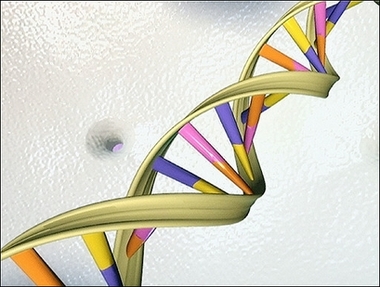New genetic clue to Type 1 diabetes
(AFP)Updated: 2007-07-17 01:08 A faulty gene on Chromosome 16 boosts the risk of developing Type 1 diabetes, according to the latest probe into the causes of this disease.
 This undated handout illustration shows the DNA double helix. A faulty gene on Chromosome 16 boosts the risk of developing Type 1 diabetes, according to the latest probe into the causes of this disease.[AFP]  |
Three variants of a gene called KIAA0350 were spotted as risk factors in a genetic profiling of 563 patients with Type 1 diabetes, which were compared to 1,146 healthy people, says the study, published online Sunday by Nature.
Type 1 diabetes occurs when the immune system destroys cells in the pancreas that produce insulin, the hormone that regulates blood glucose.
It is also called "juvenile" or "childhood" diabetes, because it often emerges in a patient's early years.
The research led by Hakon Hakonarson, of the Children's Hospital of Philadelphia, Pennsylvania, adds to the list of suspected genes, spotted on Chromosomes 6, 11, 1 and 2, each of which appear to play different roles in the disease.
Diabetes is a chronic condition in which the body does not produce enough of the hormone insulin, or cannot make proper use of the insulin it does produce, a condition called insulin resistance.
As a result, there are wild fluctuations of glucose in the blood. This can eventually lead to blindness, heart disease, amputations and kidney failure.
Type 1 diabetes is linked to genetic predisposition. The far more common Type 2 diabetes results mainly from an unhealthy diet and inactivity and is becoming epidemic in scale in many developed or fast-developing countries.
Predicting genetic vulnerability to diabetes could offer huge benefits, doctors believe.
In most cases of Type 1 diabetes, many patients are diagnosed too late to save the so-called beta cells that produce the insulin.
There is no cure for the disease, but earlier warning can encourage dietary change and swifter glucose control, thus helping to stave off potentially life-threatening complications.
|
|
|
||
|
||
|
|